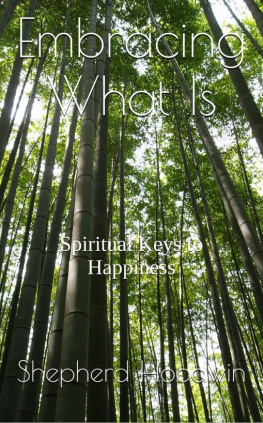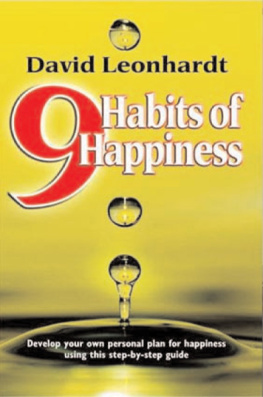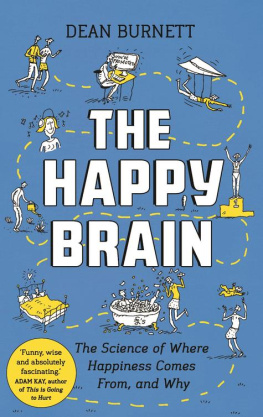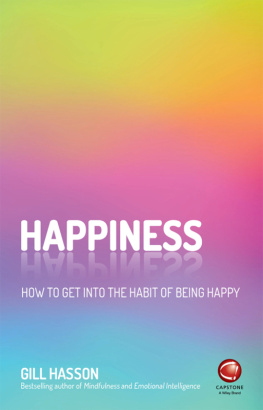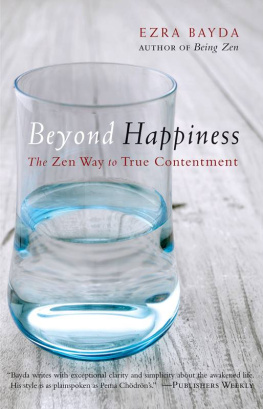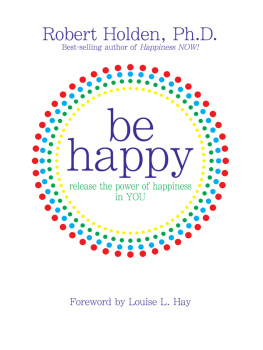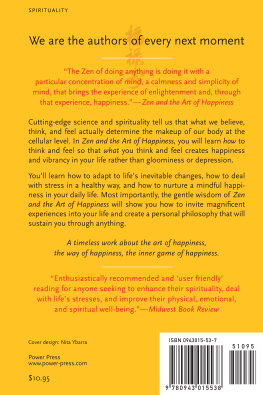EMBRACING WHAT IS
Spiritual Keys toHappiness
By ShepherdHoodwin
2015 Shepherd Hoodwin
INTRODUCTION
Happiness is too important to leave to chanceor circumstance. I sometimes joke that Im determined to learn tobe happy even if it kills me! They say that we teach what we mostwant to learn. I have been giving a good deal of thought about whatit takes to be happy, and by working on this book, I have beenclarifying happiness for myself; I hope it aids you, too.
This is excerpted from my ebook Happiness and the Michael Teachings: Learning toEmbrace What Is , available on Kindle.
Many thanks to Lauren Jensen for transcribingthe lecture upon which this is based.
Shepherd Hoodwin
shepherdhoodwin@gmail.com
http://summerjoy.com
September 10, 2015
CONTENTS
I THE MECHANICS OF HAPPINESS
Three Levels of Happiness
Freedom and Refinement
Gratitude
Polarity
Essence
Judgmentalness
Karma
Accurate Expectations
Evil
Choice
II HAPPINESS SKILLS
Framing Our Experiences
Taking Action
Our Gifts
Respecting Emotions
Life Skills
Understanding Our Differences
Balancing Rest, Play, Study, and Work
Life Task
Evolution
Modeling Love
About the Author
Other Books by Shepherd Hoodwin
PART I
THE MECHANICS OF HAPPINESS
Some people seem to come by happiness easily.Either they have a naturally sunny disposition, and/or their lifehas had relatively few bumps in the road. However, happiness ispartly a skill, and we can all improve our happiness chops withpractice, as well as by cultivating perspectives that foster it. Itis a particularly interesting challenge to start out as someone towhom happiness doesnt come easily and learn to be happy.
THREE LEVELS OF HAPPINESS
The spiritual aspect of happiness might bereferred to as joy. Joy is the surest indicator of spiritualadvancement not how much knowledge we have, our psychicabilities, or so forth. Joy is the highest manifestation of ourtrue self.
Joy could be defined as the free and refinedexpression of self through our spirit: our energy isnt blocked butneither is it out of control. All experience, whether joyful orpainful, can lead to growth. By becoming more conscious, however,we can choose to grow more through joy and less through pain.
The free and refined expression of selfthrough the personality (mind and emotions) is usually what ismeant by happiness. Through the body, we might call it pleasure.Joy, happiness, and pleasure are each beautiful and important toour evolution.
The words used dont matter; there can alsobe mental and emotional pleasure, for instance. In this book, Imgoing to use the word happiness more generally to refer to thefree and refined expression of self through all three levels, sincethe mechanics are similar with each. Body, personality, and spiritarent separate they are the three aspects of self.
FREEDOM AND REFINEMENT
Just as our muscles must both contractand expand, flex and relax, in balance, for us to move, happinessrequires both refinement and freedom. Freedom is the cardinal, orexpanded, side of happiness. It allows a larger quantity of self to come through because therearent barriers. Refinement is the ordinal, or contracted, side: itallows a higher quality ofself to come through because there is mastery over its expression.If we open up to too much quantity without quality, we can get to apoint where theres no control and happiness dissipates, like achild who laughs hysterically and ends up crying. If theres toomuch quality (control) without quantity (freedom), happiness can beblocked because were tense.
GRATITUDE
Spiritual teachings often emphasizegratitude. Gratitude increases happiness because when we aregrateful for something, we embrace it we love and approve of it so our energy flows freely through us out to it. It especiallyaffects the quantity side of happiness, but gratitude has a highvibration, so it also improves quality.
Gratitude can exist on all three levels. Whenour body likes something, such as being touched affectionately, itis grateful for it. Our life force flows out to it, and it forms acircuit with the life force flowing from the other person. Thatmovement of energy gives us pleasure.
When we embrace something intellectually andemotionally, recognizing and appreciating its value, ourpersonality energy flows out to it, forming a circuit that gives ushappiness. Emotions are the substance of our personality, andthoughts are the containers. Emotional healing is a large part ofcreating happiness, because when our emotions are stuck, this flowcannot occur.
POLARITY
The body and personality live on the physicalplane, which is a plane of polarity (opposites): light/dark,female/male, sweet/sour, etc. In polarity, we are always weighingthings, trying to discern one thing versus another so that we canlearn. The goal isnt to get rid of polarity, which isnt possible;the goal is to use it constructively. Polarity itself haspolarities it can be used in either a positive (constructive) ornegative (destructive) way.
The body naturally moves toward pleasure andaway from pain. In the negative pole, it goes out of balance andbecomes addicted it loses refinement in favor of freedom, whichbecomes license; it gains quantity but loses quality. Or it gainsquality but loses quantity by becoming anxious because it is afraidof pain.
The mind uses polarity as comparisons; mentalgratitude might compare how much better off we are than others.This can be useful for putting our life into perspective. However,being grateful only because others seem to have it worse can leadto comparisons with those who seem to have it better andcomplaining about it, which isnt useful to building happiness. Itjudges ones present situation as being wanting rather than lovingit as it is. It gains quality (discernment) at the expense ofquantity love stops flowing. Or the mind goes out of balance inthe cardinal direction by gaining quantity, being overenthusiasticabout the thing it judges good, and losing quality(discernment).
Emotional polarities are similarly built oncomparisons. Lets say that ones partner is enjoying someoneelses friendship. Emotional gratitude might frame this as onescircle of love expanding, making more love for all three of them.If one is insecure and contracts, one may become jealous: thecomparison concludes that one is getting the short end of thestick. The opposite imbalance could lead to a lack of healthyboundaries. The way we frame our experiences is as important to ourhappiness as the experiences themselves.
Essence, our core self, is outside polarityand sees all experiences as part of our journey of evolutionthrough the universe. The highest form of gratitude is thegratitude of essence that loves and is grateful for everything,seeing the perfection in all things. When we experience that, itbrings joy.
Nature demonstrates unconditional gratitude.Trees, for example, dont have any judgments against theirenvironment. There are no barriers, so we enjoy that rich oxygen,which is an expression of pure gratitude by the trees, while theyenjoy the carbon dioxide we exhale. Our experience of puregratitude is similar.
In unconditional gratitude we see the valueof everything, even if it is something we dont like. Allexperiences can teach and deepen us. We look at all people and seethat they are perfect exactly the way they are. They providelessons for themselves and others, and are growing toward theirpotential.
It doesnt serve our happiness to pretendthat we like something we dont. It does serve it to embrace whatis, changing what we can and making the best of what we cannot. Weneed not contract our energy because we dont like something.Finding some way to keep it flowing even in uncomfortablesituations is a key to happiness.
Next page
